#the street caroline leaf
Explore tagged Tumblr posts
Text
Disrupt animation research
As part of our animation workshop we were shown loads of different types of animation by different artists. I’m documenting the ones I found most interested and related to my work here.
Caroline Leaf
The first would be an animation by Caroline Leaf called The Street, the style of this animation really interested me and the smooth almost watery movement of the characters and the paint feels perfect for the idea i had in mind for this workshop, I’ll attach a short screen recording so you get the gist of it.
Tomas Mankovsky
Another animation I looked at was “Sorry I’m Late” created at Rocketboom studios which involves really interesting object animation as well a pixilation. The video was a stop motion of a man running on a ground of clothes and encountering different obstacles. I found this animation really interesting as the person in the animation was still and it was the ground of clothes that was moving to create a running effect. I also think this could be an interesting route to try as it would connect with my previous use of clothing disrupting the body. Linking the video below for anyone interested.
youtube
16 notes
·
View notes
Text
Week 1, Animation practice
Squash & stretch is one of the key principles in animation, that was developed by Disney animators in 1930. There are 12 of these principles in total and in each week we’ll study and apply one-two of them in our animations.
S&S principle allows to create realism in movements, adding expressiveness and dynamism to the characters and objects. It is based on the idea of how objects behave depending on the force or speed of movement, e.g. ball squashes when hits the ground and stretches when bounces. We also used the bouncing ball exercise to understand S&S.
(Bouncing ball could be used as the base for the animation, like frog, rabbit jumping)
Thus S&S gives the idea of the object’s material to the viewer, whether the object is made from solid matter or not.
In addition, this principle helps to emphasize emotions of the character, focusing viewers’ attention to that. Without this principle the animations will look blankly and boring.
Caroline Leaf is a Canadian-American filmmaker, animator, director, tutor and artist, who was born in 1946 in Seattle, now lives in London. She created sand and paint on glass animation techniques, masterfully manipulating objects to show the story, also produced amazing works, always trying something new.
“My animated films are known for their story telling, emotional content, and graphic style, which evolved from the innovative handcrafted animation techniques I invented.” - Caroline.

"The Street" animated short-film.
She uses abstract themes in her animations, also including representation of Canadian culture, e.g. it can be clearly seen in films “The Street”, “The Owl who Married the Goose”, and “Kate and Anna McGarrigle”.
She put a huge impact into the animation industry, now teaching others and being a tutor at the National Film and Television School in London.
0 notes
Text
Squash and stretch
. Animation principle of applying a contrasting change of shape to give flexibility and life, Squash is to show force of impact or anticipation, and Stretch is to show acceleration or velocity. The benefits to this is to add a sense of weight and impact.
. An important rule is that the volume or the object should remain constant at rest, squashed or stretched. If the rule is not obeyed then the object appears to shrink when squashed and to grow when stretched.
. Examples - Rubber Ball, Flour bag, Frog, Rabbit, Squirrel.
The principle is outlined by Ollie Johnston and Frank Thomas in the 1981 book, The Illusion of life: Disney Animation.
Ollie Johnston
31st October 1912 - 14th April 2008 (95)
. American motion picture animator and one of Disneys 9 old men, last surviving at the time of death.
. Worked on Bambi, and was very proud of his work on it, as it showed that animation could bring out strong emotional responses from the audience, just as well as a live-action drama.
Worked very closely with another disney animator, Frank Thomas. They met as art students at Stanford university in the 1930's.
. He was awarded the National Medal of Arts in 2005
Frank Thomas
. 5th September 1912 - 8th September 2004 (92)
. American animator and pianist, also was one of the 9 old men.
. The characters are scenes Thomas animated where the Dwarfs crying over snow whites "dead" body, Pinocchio singing at the marionette theatre, Bambi and Thumper on ice, Lady and the tramp eating spaghetti to name only a few.
Caroline Leaf
. Canadian American, born 12th August 1946 (78), Studied at Harvard university, Architectural sciences and visual arts, in her last year she enrolled in an animation class which was taught by Derek Lamb.
. Worked for National film board of Canada
. Her animation style is interesting, it's very fluid but not entirely smooth but gives it the personality it needs to be recognisable. Her animation style is hand crafted, using media like, sand, paint on glass and hand etchings on film stock. Her stories are mostly adaptations from literature and reflect dark narrative content.
. She is also an oil painter and does abstract mark making.
Derek Lamb
20th June 1936 - 5th November 2005 (69)
. British animation filmmaker and producer
. Executive producer of the National Film Board of Canada's English Animation Studio from 1976 - 1982
. Contributed to sesame street and "I know an old lady who swallowed a fly"
1 note
·
View note
Text
Appeal
Appeal in animation refers to the appeal of a character design, or perhaps an aspect that makes them stand out. Using a variety of shapes in a character can make them look individual. This also goes for their proportions, whether they have a large head or nose or long legs. Simplifying the character can make them more distinct and easier to notice, to much detail can take away from this, it is also harder to animate.
Caroline leaf
Caroline leaf is a Canadian American filmmaker, director and animator. She is well known for her short, animated films.
She started off working at the NFB from 172 to 1991, where she created the paint on glass animation and the sand animation technique. The paint on glass animation technique included oil paints and glass, one manipulates slowly drying oil paints on a sheet of glass, whilst a camera is positioned over the top of the glass and takes a picture every frame. this creates a unique painterly movement where brushstrokes are emphasised.
Whilst sand is simply moved and shifted round a light box, she used sand animation to create one of her first animations Sand, in which she was awarded a scholarship to Harvard university for.
She then created her second animation in Italy called Orfeo, a paint on glass animation.
Later down the line she created one of her more well-known works the Street. This paint on glass animation gives of a old rustic feel with the use of the deep monochromatic brown black colours giving of a dark atmosphere to the film. Paint animation can come out quite smudgy giving a very raw and messy movement.
0 notes
Text
Caroline Leaf

The artwork of Caroline Leaf takes us on an interesting ride through experimental storytelling and animation. Leaf is known for her creative techniques, which include paint-on-glass animation and sand animation. She creates pieces that are both fascinating to look at and meaningful to watch. Her art breaks standard by reaching into the depths of human emotions and personal narratives. One of her well-known works, "The Street," is an interesting story with detailed hand-drawn animation that addresses urban life. With its unique style, Leaf lets viewers to interact with a combination of connection and visual components. Caroline Leaf has left a lasting impression on animation with her unique storyline and style, encouraging future generations to think creatively.

0 notes
Text
Caroline leaf
Caroline Leaf is a well-known Canadian-American filmmaker and animator known for her unique and inventive work in the world of animation.
Leaf, who was born in 1946, is well known for her innovative approach in animation. Her first film, "Sand, or Peter and the Wolf", was made solely with sand poured on a lightbox, and moved by her finger to create images.
Her writing frequently goes into deep, contemplative issues that she expresses through her distinct, fluid animation style. "The Street" (1976), an adaptation of a Mordecai Richler story that was nominated for an Academy Award, was one of her most well-known and praised works. Leaf's contributions to animation are marked by her creative artistic approach that combines visual artistry with profound narrative aspects, cementing her place in the field of animated film.

"Sand, or Peter and the Wolf" Ref: http://www.carolineleaf.com/work_bio.php
0 notes
Text
Caroline Leaf
Animation at Harvard in 1968
it was taught as a form of artistic self-expression, perhaps like writing poetry, and the class was open to everyone
Drawing abilities and film knowledge were not prerequisites so animated keychains and quarters, breathing life into inanimate objects was the focus
The things they worked with were stop motion and pixilation and worked with cutouts
Caroline discovered that she could draw with beach sand and could make the drawings mov.
The main goal was to make it move, and they believed Norman McLaren’s observation that what happens between the frames is more important than what happens on each frame.
They had to figure things out on their own which gave them the chance to create their own solution and a unique way to do things.
Her animated films are known for their storytelling, emotional content, and graphic style, which evolved from the innovative handcrafted animation techniques she invented. She used beach sand manipulated on a lightbox, watercolour and gouache finger painting on glass, and images made by scratching in the soft emulsion of exposed colour 35mm and 70mm film stock.
Her first animation was ‘Sand or Peter and the Wolf’
Her description for the processes of the animation is ‘ It was made with a jar of local beach sand poured out onto a light box. Lit from below and manipulated with my fingers, the film’s black and white silhouetted sand figures move in a fluid and shadowy world. The camera was fixed to the wall above the lightbox. From these beginnings, I developed a style of animating that was an ongoing process of drawing, shooting and redrawing the images to create a sense of movement. My subsequent films are refinements and extensions of this handmade straight ahead under-the- camera technique.’


Other things she has worked on are
- The Owl Who Married a Goose(1974) an adaptation of an Inuit legend,
- The Street (1976) adapted from a short story by Mordecai Richler, which received an Academy Award nomination and was voted 2nd best animation film of all time by the Olympiad of Animation Los Angeles 1984,
- The Metamorphosis of Mr. Samsa (1977) adapted from Franz Kafka's story 'The Metamorphosis' and begun with a grant from the American Film Institute,
- Interview (1979) an autobiographical collaboration with director Veronika Soul,
- Two Sisters/Entre Deux Soeurs (1990) an original story etched in the layers of 70mm film emulsion.
Step by step sand animation:
Pour beach sand onto a white glass surface lit evenly from below.
Pour beach sand onto a white glass surface lit evenly from below.
In a dark room.
Using your fingers, or whatever tools are at hand, draw in the sand.
The opaque sand blocks light from below. . .
. . . and creates dark shapes.
youtube
0 notes
Text
Caroline Leaf is an animator whose work since the 1960’s has made her a memorable name in the industry for her solo work and animation techniques that she herself had invented.
She started off in Harvard and learned to animate there, over time developing several methods of animating such as using beach sand on a lightbox, which is how she made her first animated film, Sand or Peter and the Wolf. With this piece, Caroline used the silhouettes she created in the sand to tell a classic fairy tale in a fluid and constant motion. She also used this style in The Owl Who Married a Goose and heavily utilized the black-and-beige color scheme to show contrast between the animals and the environment.
In her next piece though, The Street, she takes the fluid motions of her style and takes it to another level as she incorporates color into her work as well this time. The film almost feels like a camera shot of many events, and the fluidity is used not only for artistic transitions, but also to make it feel more present and real.
Caroline’s work managed to win her many awards over the years for her unique methods and original style with a lightbox and sand. It’s truly a testament to animation and how it can be expressed in any number of ways.
1 note
·
View note
Text
Squash/Stretch and Caroline Leaf
Squash and Stretch is one of the twelve principles of animation used in dynamic animation. The movement technique that brings life to anything ranging from a bouncing ball to a fully animated run cycle and is predominantly used in older Disney films such as Robin Hood, as well as the classic Looney Tunes shows involving the fluid designs of Daffy Duck, Bugs Bunny and Taz the Tasmanian Devil.
This technique changes the shape of a character or object to add flexibility and fluidity to the movement path. To put it into perspective, the bouncing ball practice teaches us how to stretch the ball during the ascent and descent of the object, then squash it once making contact with a still, immovable surface. Without the exaggeration of movement, the animation wouldn’t catch the attention of the viewer as much.
Caroline Leaf was a Canadian-American animator and director who used Squash and Stretch in her works. Her studies started at Harvard in the 1960s when animation and filmmaking were pioneered and accessible with the lowered prices of equipment required to create. She studied under Derek Lamb who had come from London and taught students about filmmaking as an art form rather than a professional career, practicing self-expressionism through art and evoking feeling using picture motion.
Leaf’s work was primarily moving sand or painting on glass, using fluid, liquid-like movements to invoke strong feelings. Her style of animating is typically dark, familiar to Weimar style cinema post-WW1 and WW2 in the sense of moving, painterly shadows and bold dark lines. Her work “The Street” is an example of her WW2 storytelling, unfurling a story of a boy coming of age in the era of armed forces and depression.
0 notes
Text
Artist Research - Caroline Leaf
Caroline Leaf is a multi award winning Artist and Animator, who has created a variety of animated experimental films in her career, creating "The Street", "The Owl Who Married a Goose" and "Kate and Anna McGarrigle". Although she has authored few films, her ability to create compelling narratives, her innovative and creative process utilizing any material she can to create her animations, and her open minded nature has led to her becoming a recognized and respected artist.
Attending a 1 year animation course at Harvard University in 1968, she learnt to use Animation not as an industry professional, but as an artistic form of self expression. This is where she learnt how to draw using essentially anything that could be manipulated into forming images. Leaf was not taught about film language or editing, rather the class was often left alone to discover their owl solutions.


Leaf's first film, "Sand or Peter and the Wolf" was made from a jar of beach sand poured onto a light box. This created a distinct and shadowy feel to her work, which would inspire her future creative endeavors. Her following films are continued refinements of these techniques. Leaf's techniques did not align with traditional team productions, because of this she mostly worked solo, being sole director and animator on her projects.
Leaf's films are known for their emotional story telling and distinctive vocative style. the imagery is rough and unnatural in some of her work, simplistic and childlike in others. In 1984 the Oscars placed leaf's "The Street" in second place when judging all animated films ever made, winning over Disney and other corporate productions.
0 notes
Photo

“The Street” (1976) by Caroline Leaf:
(click picture or linked text to view film)
This award-winning animation is a poignant interpretation of a short story by Montreal author Mordecai Richler. It makes a strong statement about the way in which many families respond to their old and infirm members. In washes of watercolour and ink, filmmaker Caroline Leaf illustrates reactions to a dying grandmother, capturing family feelings and distilling them into harsh reality.
3 notes
·
View notes
Photo




The Street (1976) | Caroline Leaf
1 note
·
View note
Text
Temporal Art Secodary Research : Caroline Leaf ( sand art performance stop-motion animation )
(05/10/22)
Whilst doing my stop motion sand video yesterday One of the lectures recommended I look at a Canadian - American stop motion filmmaker called Caroline Leaf.
She made short stop motion cinematic style performance films with sand (sometimes coloured ) plastic, and wet paint-on-glass. Some of her works include 'Sand or Peter and the Wolf'(1969) ,and 'Interview'(1979).

(Image credit : www.carolineleaf.com)
All of her art was temporal as each frame in the stop motion film had to be erased in order to create the next. My favourite film by her was the Oscar nominated ten minute stop motion film called 'The Street'(1976). I took inspiration from this film to make my sand art stop animation of a fish swimming. I loved how she added colour to the sand.

(Image credit : www.carolineleaf.com)
One thing I learned from watching her film that featured many human figures drawn with sand, is that if I was going to make a sand stop motion video with human figures in it, I should make them cartoon characters as it would be time consuming and hard to redraw all of the details for every frame.
research and images are from www.carolineleaf.com and www.entertainment.ie
My notes :

7 notes
·
View notes
Text
@mogsk showed me a fascinatingly odd animated film called Twice Upon A Time (1983), dir. these guys. the story was mostly just a vehicle for improvised comedy VA although it had some cool concepts like the transforming animal mc and the clock that controls time (even if in service to a kind of tedious moral about ‘slowing down’)...
...but visually it used collage, a really 2D graphical approach to broken perspective and for its characters backlit cutout animation in a way that really reminded me of Soyuzmutfilm. I don’t really know enough about like, Modernist art movements to really place its visual style (sadly seeing a photo very disjointedly pasted into a painted bg just makes me think of homestuck lmao) but it was definitely distinctive.

the ‘cosmic clock’ especially stood out (background pan stitched together by Ward Jenkins for the interview linked below):

and it had some pretty ambitious sequences like this flyby of miniatures against a multiplane painted backdrop

or comping its characters into greyscale live action footage.
i found an interview with the art director here, and he describes his inspirations:
When creating the world of TWICE, especially Botch's Murkworks, what were your sources for inspiration? Were there any artists or illustrators (or films) that Korty had you look up to help you get started? John screened a whole series of films that he thought might be great inspiration. We watched many of John Hubley's films and I especially loved WINDY DAY. We looked at several Caroline Leaf films including THE STREET and other Canadian Film Board movies. Finally, John showed a 35 mm print of YELLOW SUBMARINE and I'd never seen anything so boldly great in its design. All the films had in common a very loose improvisational style that John loved.
For the Murkworks I looked at books about old European factories and train stations. John Korty gave me a great book of Victorian engravings of gears and all kinds of mechanical parts and we used these as background elements. John Baker photographed wonderful cycles of pistons and train engine mechanisms that we put the in the backgrounds too. Piranesi engravings were a big inspiration for the castle designs.


more screenshots over in the interview linked and this previous article. so yeah. cool to see, didn’t know this existed. a very limited release and arguments over different versions of the audio (in which the swear-ier version was actually less faithful to the original script, deeply upsetting the director) led to it basically disappearing from memory and having almost no impact (not helping that it dropped in the doldrums before the ‘disney renaissance’, although it actually postdates Bluths’ Secret of NIMH). quite a shame... there’s definitely a few people keeping up at least aspects of this style (c.f. Vewn doing the hyper distorted perspectives and chaotic shape language) but as the filmmakers lament in the interview, overall the style has basically disappeared even in digital imitation
18 notes
·
View notes
Text
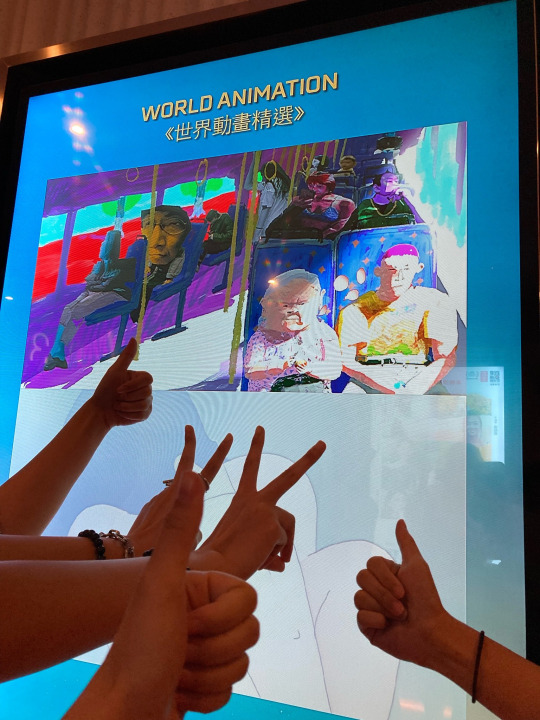
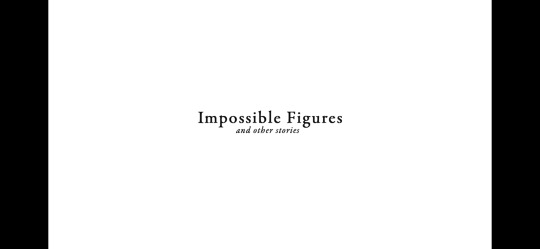
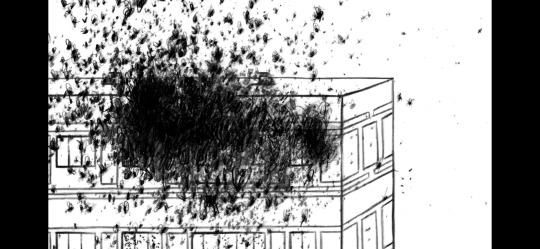
今日睇世界動畫精選,睇左三條不得了既animation!! 入場miss左兩套animation T vT 第三套Impossible Figures and other stories I 啲cam move睇到stone撚咗,點解啲timing 同metamorphosis可以捉得咁準,唔敢相信係frame by frame animation, 唔知佢係咪逐格畫,可能係先畫左一大堆boiling element,再dum入AE搞3D cam, 成套野啲transition都睇得好爽(⁎⁍̴̛ᴗ⁍̴̛⁎) 3D generate既procedural 野同個visual都好夾,一開頭個個dolly-in pass though哂成段回憶個part最impress到我,2D line加咁smooth 既camera movement成件事唔會睇落好CG, 同好有一氣呵成既感覺! National Film Board of Canada出既independent animation都好lun firm, 想mark 翻呢幾位我巧鐘意既NFB artist追翻以前啲animation黎睇 - Caroline Leaf (用沙逐格整左The Street個條友), Norman McLaren(發明pixilation, drawn on film同graphical sound個位大senpei) , Paul Driessen (The End of the World in Four Seasons - Multiframe 用咗8個window同時show個個場景既8個分鏡,巧得意!) ,仲有Marta Pajek,佢呢套好似仲有出part 2,3, 要睇睇佢!
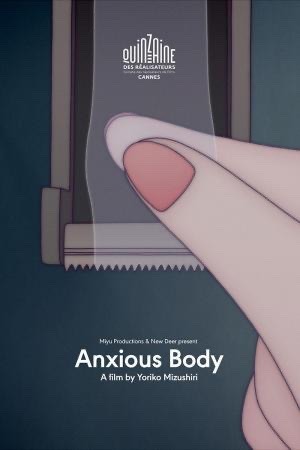
第四套《不安之體》Yoriko Mizushiri架仔作品必屬佳品,好鐘意佢啲彈下彈下既線條,個種相黏既觸感睇到成身都痴埋一舊,條片俾左好多唔同既感官體驗,透過sound design同畫面動作,個腦好似自動波咁俾左唔同質感你,有啲係幾舒服,兩隻手指痴住張膠紙,有啲睇到起雞皮,蛇條痢痴住咗係膠紙俾刀片切咗落黎,仲有個人啲肉俾個網cool到吱哂啲肉出黎,好多質感既一條片,sound design巧得意(⁎⁍̴̛ᴗ⁍̴̛⁎),聲音巧多layer同texture, 睇得巧爽!
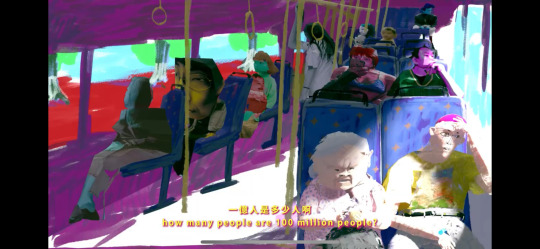
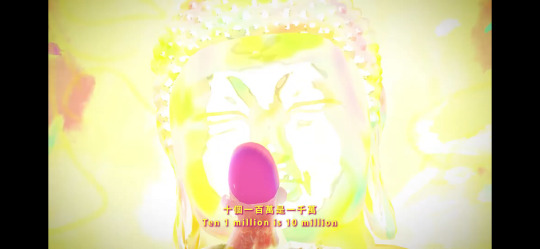
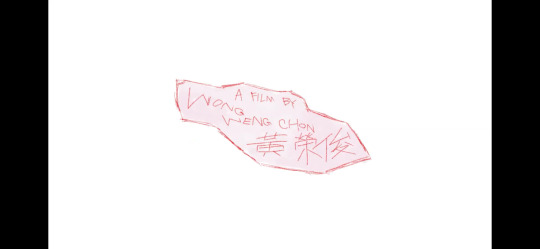
第六套《梅婆》黃榮俊,dllm大愛です!一定都是湯淺政明的fan屎(⁎⁍̴̛ᴗ⁍̴̛⁎) 「十個一百係咪一億」無限loop, 呢啲recording實在太正鳥,有時都好想錄低啲阿叔講野,整翻隻cassette慢慢聽佢地講經~入面都係玩左好多唔同style同texture, hand drawn, 3D, live action 全部都work到(⁎⁍̴̛ᴗ⁍̴̛⁎)屌師兄簡直係人生榜樣,無論係故事同animation都睇到好有共鳴~觀音誦經個part 到左成條片高潮位, 跟住入翻細個同婆婆既回憶,巧溫馨巧貼地(;´༎ຶД༎ຶ`) 列入十大我最喜愛animation之一!
3 notes
·
View notes
Text
peonies and red roses
for @certifiedceraunophile and her comments on this post that drove me feral
***
Klaus walked down the London street and stopped before a store when the Google Maps app on his phone announced that he’d reached his destination. He glanced up at the shop front, his brow creasing, then reached into the pocket of his leather jacket. He pulled out a tattered piece of parchment scrawled with an address in lilting script. He checked Google Maps again.
No, it definitely looked like the Bennett witch had given him the correct address.
He gazed back up at the shop. The only way to describe the shop was… majestic — the shop front was completely made of glass, the windows bisected by wood and metal that curved up into an arc. The display windows pushed out to the sidewalk, full of verdant plants and soft pastel flowers and small flowering trees, looking very much like a mini-paradise amongst the concrete and stone of London; the glass door was set further into the building and was covered in more curving patterns. As far back as Klaus could see, the rest of the shop was similarly full of plants and greenery, forming its own internal garden, the back wall painted with a scene of a wild forest. His keen artist’s eye could pick out the skill and the care used to paint each branch, each spiky leaf.
Most magical creatures Klaus had met tended to live in run-down or abandoned buildings full of dust and rats and covered in graffiti. This shop was obviously run by a fae, but Klaus still had left to determine whether he could find what he was looking for here.
The shop bell tinkled delicately as he pushed the door aside and stepped in. Immediately, he was hit with wild magic — lush and curious, coiling around his leg like a delicate vine, dancing across his skin like sparks of electricity. It didn’t feel dangerous, rather gentle, its presence wrapping around Klaus like a blanket. He sensed that the magic belonged to the shop and its mere existence on this London street rather than any specific individual.
“Hello?” called a smooth, unexpectedly American voice, and the owner of the voice turned a corner and appeared before Klaus a moment later.
They were stunning, lithe and draped in a dress of green silk, organza, and tulle embroidered with colorful flowers and with sheer sleeves that fell to their wrist. The dress’s bustier was cut low, emphasizing a stretch of smooth delectable skin and the slightest curve of cleavage. Their sun-silk hair was braided up with flowers that matched the ones on their dress woven in throughout, revealing the sharp point of their ears. The only other indicator of their fae nature was a pair of ocean-colored eyes that were slanted like a cat’s and blinked at Klaus.
“Can I help you?” the fae asked, stepping closer. They were trailed by a small grey cat who mewed softly, its tail waving slowly.
“Yes,” said Klaus stiffly, caught off-guard by this beautiful creature. “I need to use the portal to the fae kingdom.”
Those ocean eyes narrowed at him. “Yeah, that’s not how this works,” they said, and Klaus felt the shop’s magic snap across his skin, not painful but forceful. “If you enter a shop and someone asks you if they can help you, you’re supposed to be polite.” Their soft-looking lips spread into an amused smile. “Possibly even do the owner the courtesy of introducing yourself. For example, my name is Caroline.”
“Klaus,” he rasped in reply. “Klaus Mikaelson.”
Tossing her head back, Caroline laughed, and the sound was high and musical like a flute. “What brings the Original Hybrid to my humble florist shop?”
“I told you,” Klaus groused. “I need to use your portal to enter the fae kingdom. There’s a faction of rogue magical creatures intent on wiping out all humans. I need to secure your royal family’s help to stop them.”
“Wow,” Caroline snarked, “I thought vampires were supposed to be selfish and blood-thirsty. That sounds almost altruistic of you.”
Klaus gritted his teeth, ignoring Caroline’s cutting remark. “Will you let me use the portal?”
Caroline hummed, and her cat scooted closer, twining itself around her legs and purring. “A please and thank you wouldn’t hurt.”
A sudden flare of burning anger washed over him, and he hissed, his fangs dropping. He knew his face had transformed, his eyes surrounded by a mess of sprawling veins, but unlike most magical creatures, Caroline didn’t cower at a glimpse of his inner monster. She didn’t even flinch.
“Rude,” she said, floating a wrist through the air as she turned to examine small pink flowers on a neighboring tree. “All I did was ask you to use some manners.”
“I don’t think you understand what’s at stake,” Klaus snapped. “Oh, no,” replied Caroline sunnily, “I think I do.” She paused for emphasis. “Magical creatures intent on killing all of humanity. That would be bad because… well, duh, genocide and mass-murder. The world would fall into a disarray. An outright magical war.” She grimaced. “Would be exceedingly bad for you vampires. You’d all starve.”
“Yes, thank you for stating the obvious,” Klaus told her, his words coming out as a dangerous hiss. “So… the portal — where is it?”
“Hmm, I’m still not sure if I trust you,” she said. “You being the Original Hybrid and all.
He snarled and lunged forward, hands outstretched to wrap around her delicate throat — fae couldn’t die, but he could still cause her an immense amount of pain — but then found himself frozen several feet away from her, his legs rooted to the ground as if made of stone.
“Oops, sorry, not going to let you turn me into a snack,” Caroline said, fiercely, her fingers sparking golden. Then she flicked her fingers, and he flew back, vines wrapping around his legs and up his body. They yanked him backwards, pulling him out of the store, and Caroline waved at him. “Come back when you’re ready to be polite, Mr. Mikaelson.”
Klaus hissed as the vines dumped him on the pavement outside, a surprised pedestrian toppling over. As soon as the vines retreated inside, he lunged to his feet in a blur of speed and rushed toward the shop front, intent on shattering through the windows, but he ground to a sudden halt inches away.
The shop had disappeared, replaced by an empty shop front. Klaus swore. He stuffed a hand into his pocket and pulled out the piece of parchment but nearly dropped it when it sparked golden and started burning. He really did drop it then, the flames licking closer to his hand.
“Bloody fae magic,” he murmured. Caroline had moved the shop somehow, and now Klaus would have to find it again and talk the stubborn fae into letting him access the portal.
As he began to walk down the street again, he smirked. He was looking forward to this challenge.
26 notes
·
View notes